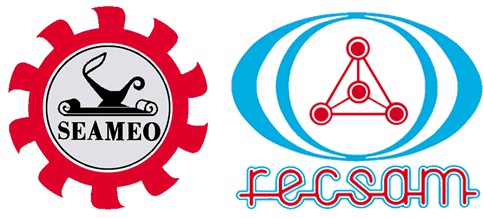Well within a year of the inception of SEAMEO, delegates from six SEAMEO countries who attended the Technical Workshop in July 1966 in Kuala Lumpur agreed to establish a regional centre for the improvement of teaching and learning of science and mathematics at the elementary and secondary levels. The educationists concurred on strong regional cooperation in the relevant curricular areas; based on the perception that establishing a pool of skilled science and mathematics teachers was a high-priority for the region.
Penang, the Pearl of the Orient, was chosen as the central location to emplace this regional Centre. This decision was based on the conviction that such an institution could grow from strength-to-strength, assuredly, in the presence of a teacher training college in the same campus grounds which also had its focus on science and mathematics education, albeit solely for a national teacher-education programme.
Thus, the SEAMEO Regional Centre for Education in Science and Mathematics (SEAMEO RECSAM) was founded with the main objective of helping Member Countries to improve the teaching of science and mathematics in order to lay the foundation for meeting the technically and scientifically trained human resource requirements of the region.
On the outset, the proposal included operational plans to make RECSAM a centre of excellence to enhance the quality of teaching-learning in science and mathematics education. The Centre was also seen as an exemplar role-player that would be entrusted to actively involve national and regional teacher-training institutions, colleges of education, and faculties of science and mathematics in implementing useful programmes. This was seen as one of the avenues that could help member countries to meet emerging trends and future challenges affecting the region.
SEAMEO RECSAM was officially inaugurated in May 1967 at the First Steering Committee Meeting, consisting of two ministerial representatives from each of the six SEAMEO Member Countries, the Malaysian Ministry of Education and the US Government. The Fourth Ministerial Conference of SEAMEO, held in Jakarta in January 1969, approved the first Five-Year Development Plan (July 1970 to June 1975), for which the steering committee had identified policy guidelines to be followed. This plan was SEAMEO RECSAM’s First Permanent Phase of Operation.In June 1969, another Ministerial Conference was held in Singapore where arrangements to source for funds were presented. The host government, Malaysia, would absorb 50 percent of the total building and operational costs, while the balance would be contributed by the US Government.
During the Interim Phase, massive project works were carried out, right from architectural and engineering studies to acquiring facilities that were temporarily loaned by (then) the Malayan Teachers’ College (MTC), presently known as Institut Perguruan Persekutuan Pulau Pinang (I4P).
Many stages had to be surmounted in order to put RECSAM on a proper footing to carry out its mission statement. These entailed the preparation of the required legal documentations and acquisition of curriculum materials, equipment and library resources, in preparation for SEAMEO RECSAM to open its doors to regional participants in July 1970.In between all the on-going infrastructural developments, December 1971 saw SEAMEO and the Government of Malaysia officially signing the document that legalised the privileges and immunities,which gave RECSAM the status it enjoys.
The First Enabling Instrument of RECSAM that detailed the role of the Governing Board and the Centre was approved and adopted by the Council at the 7th Ministerial Conference in Vientiane, Laos in January 1972. The Governing Board Members of the SEAMEO Centres were represented by the respective Senior Officials of the SEAMEO Ministries of Education.
When RECSAM was completed with up-to-date facilities, a culmination of excitement and assiduous preparation took place as history was about to be aptly recorded. His Excellency, Tun Dr. Mahathir Mohamad, then the Deputy Prime Minister cum Minister of Education Malaysia officiated the Opening of SEAMEO RECSAM on 31 October 1977. Tun Mahathir later went on to become the longest-serving Prime Minister of Malaysia.
The official adoption of RECSAM’s logo and logotype took place in 1975; The molecular-triangle model or known as a tetrahedron symbolises science and mathematics; The ellipse mirrors the multiplying effect created by RECSAM in its leadership role in the region; The colour red signifies strength, power and energy; Blue represents the Southeast Asian Region; and White denotes the ability to accept and be ready for change.

